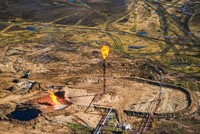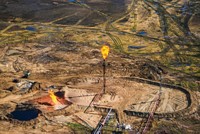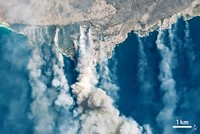Advertisement
Grab your lab coat. Let's get started
Welcome!
Welcome!
Create an account below to get 6 C&EN articles per month, receive newsletters and more - all free.
It seems this is your first time logging in online. Please enter the following information to continue.
As an ACS member you automatically get access to this site. All we need is few more details to create your reading experience.
Not you? Sign in with a different account.
Not you? Sign in with a different account.
ERROR 1
ERROR 1
ERROR 2
ERROR 2
ERROR 2
ERROR 2
ERROR 2
Password and Confirm password must match.
If you have an ACS member number, please enter it here so we can link this account to your membership. (optional)
ERROR 2
ACS values your privacy. By submitting your information, you are gaining access to C&EN and subscribing to our weekly newsletter. We use the information you provide to make your reading experience better, and we will never sell your data to third party members.
Greenhouse Gases
Nitrous oxide from Tibetan permafrost packs global warming punch
Scientists estimate that thawing ground could be a major source of the greenhouse gas
by Janet Pelley, special to C&EN
July 31, 2018

Permafrost, the perennially frozen layer of soil found in cold regions, releases the greenhouse gases carbon dioxide and methane as it thaws—a problem becoming more prevalent with global climate change. But permafrost researchers have often overlooked emissions of nitrous oxide, a gas with 300 times the warming power of CO2. Now, a new study estimates that thawing areas of Tibetan alpine permafrost are releasing so much N2O that their emission rates rival those from the largest known terrestrial sources of the gas (Environ. Sci. Technol. 2018, DOI: 10.1021/acs.est.8b02271).
Made famous as laughing gas, N2O in the atmosphere not only traps heat efficiently, it is also the leading ozone-depleting substance in the stratosphere. The gas is mostly formed when bacteria and fungi in soil or seawater convert the nutrients nitrate and ammonia to N2O. Even though permafrost soil stores large amounts of organic nitrogen in the form of frozen plant and animal parts, scientists have assumed that the cold temperatures prevent most of it from decomposing into the nitrate and ammonia that fuel N2O production. In fact, plants growing on top of permafrost greedily compete for the small amounts of nutrients produced in the frigid soil, says Yuanhe Yang, a global change ecologist with the Institute of Botany at the Chinese Academy of Sciences.
A handful of studies have hinted that thawing permafrost could release substantial amounts of nitrogen in the form of N2O. But these studies focused on so-called lowland permafrost ecosystems, which tend to be waterlogged after thawing and thus slow N2O production. Because upland permafrost covers nearly 1 million km2 worldwide and is drier, its thawing could be a big source of N2O emissions. Yang and his colleagues decided to directly measure these emissions in the Tibetan Plateau.
The team trekked to a grassy alpine area that included a large gully that has been eroding and collapsing for more than 20 years due to warming of the permafrost. The researchers compared an undisturbed control site to several thawed patches in the gully.
Suspecting that nitrate supplies might be fueling N2O production, the researchers measured both compounds at each of the sampling sites. The most recently thawed and exposed site had the highest soil nitrate levels, and the scientists measured N2O emissions of 3.1 mg/m2 per day, more than 100 times the amount from the control site. “This matches the nitrous oxide flux from tropical forest soils, which is the largest terrestrial source of nitrous oxide,” Yang says. He calculated that the global warming potential of N2O releases from the newly thawed gully was significant—equaling nearly 60% of the global warming potential of methane from that same location.
For each site, Yang’s team also tracked the abundance of three microbial genes that control the formation of N2O. A statistical analysis revealed that the combined effects of environmental factors and gene frequencies accounted for the patterns of N2O emissions along the gully. Yang explains that the newly warmed and exposed soil had ideal moisture conditions for microbes that produce N2O and no plant cover to compete for nitrate.
Advertisement
“This is the first field experiment to link the liberation of nitrate and the change in microbial genes to increased nitrous oxide flux,” says Carolina Voigt, a biogeochemist at the University of Montreal.
As the planet warms, more and more upland permafrost will thaw, Yang says. “Based on the results of this study, more nitrous oxide will be released from upland permafrost soils to the atmosphere and become a positive feedback to climate change,” he concludes.
CLARIFICATION: This story was updated on Aug. 1, 2018 to clarify that nitrous oxide emission rates rival those from terrestrial sources.
This article has been translated into Spanish by Divulgame.org and can be found here.





Join the conversation
Contact the reporter
Submit a Letter to the Editor for publication
Engage with us on Twitter